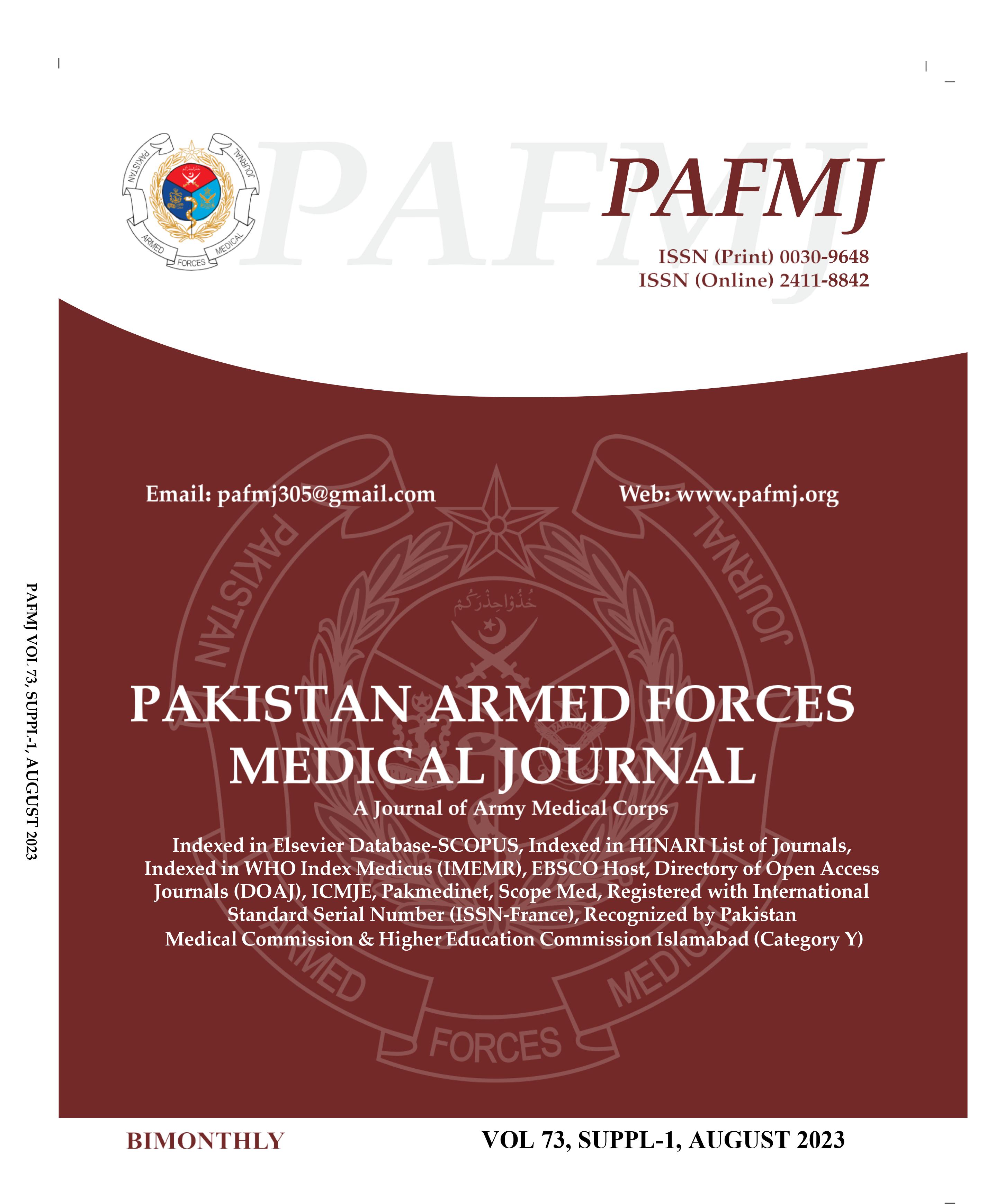Frequency of Hypothyroidism in Patients with Beta-Thalassemia Major
DOI:
https://doi.org/10.51253/pafmj.v73iSUPPL-1.3727Keywords:
Beta-thalassemia major, Hypothyroidism, Serum ferritin levelAbstract
Objective: To determine the frequency of hypothyroidism in patients with beta-thalassemia major in Paediatric department of Pak Emirates Military Hospital, Rawalpindi Pakistan.
Study Design: Cross-sectional study.
Place and Duration of Study: Paediatric Medicine Department, Pak Emirates Military Hospital, Rawalpindi Pakistan, from
Nov 2018 to Oct 2019.
Methodology: All transfusion dependant beta-thalassemia major (BTM) patient sir respective of age and gender were
consecutively enrolled. For the assessment of thyroid function, a random sample of 3 ml venous blood was drawn. The
presence of increased thyroid stimulating hormone and normal T4, T3 were labelled as compensated, increased thyroid
stimulating hormone, decreased T4 and/or T3 as uncompensated.
Results: Of 73 patients, the mean age of the patients was 7.0±3.87 years. All the patients were getting iron chelation therapy. The mean serum ferritin level was 3911.68±2017.36 ng/mL. Twenty-eight (38.4%) cases were hypothyroid. Subclinical hypothyroidism was documented in 25(89.3%) while clinical hypothyroidism in 3(10.7%) patients. Patients with age >8 years (p=<0.001), >2 years of age at the time of 1st blood transfusion (p<0.001)>8 numbers of blood transfusion (p<0.001) and >4000ng/dl serum ferritin levels (p<0.007) were noted as factors significantly associated with hypothyroidism.
Conclusion: A considerable number of patients were affected with hypothyroidism. Moreover, high serum ferritin level and a high number of blood transfusions were found to be significant determinants.















